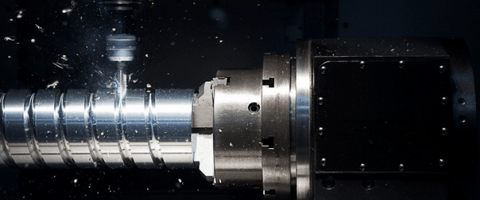Bar feeders automate the delivery of raw material into CNC lathes, enabling continuous, unattended...
When to Use a Collet Chuck
The machine-tool industry plays an important role in the manufacturing industry in the United States.
Machine tools, which can cut and shape metal, are necessary to reproduce the required
technologies in an industrial economy.
Even though consumption of machine tools in the United States has remained lower than it was at
its all-time high since 2012, the country is still among the leading users of CNC (Computer
Numerical Control) machines in the manufacturing industry.
Collet Chuck vs. Jaw Toothed Chuck
The most popular machine tools used for various tasks are the collet chuck, and the jaw toothed
chuck. The collet chuck is typically what people who use machines turn to in those instances when
the jaw chuck, used for more applications, is not applicable.
It is essential for the person operating the machine to have the capacity to decide which kind of
chuck is the most appropriate for the task. The following are the instances that you can use collet
chuck instead of the three-jaw powered chuck.
1. Cold Rolled Materials
Because of the intrinsic diameter differences in hot rolled steel, castings, forgings, and extrusions,
standard jaw chucks typically perform better than other types of chucks for holding these different
parts. On the other hand, collet chucks work better with cold-rolled material because of the
consistency and uniformity of its dimensions.
2. Small Size Work Pieces
Compared to a jaw chuck, a collet chuck has a narrower range of allowable workpiece sizes in the
sizes it can hold. Collet chucks, in essence, sacrifice adaptability in favor of speed. A collet chuck is
a more efficient option when working with parts of a consistently smaller size.
3. Where More Precision is Needed
Clamping force is applied by a collet chuck all around the circumference of the part, rather than just
at select contact areas, which results in snugly dimensional accuracy and concentricity. Because of
the precision clamping that it offers, you can use a collet chuck even after using a jaw chuck for the first
procedure.
4. Smaller Dimensions
Jaw chucks are typically applied when the machining length of a workpiece necessitates the
utilization of all of the machines available travel to cut it. Collet chucks are most effective when used
with workpieces that have a diameter of fewer than three inches.
In conclusion, collet chucks excel in general machining, work performed in small batches, and light
cuts. Contact us today to learn about all the collet chuck solutions that we offer!
.png)



